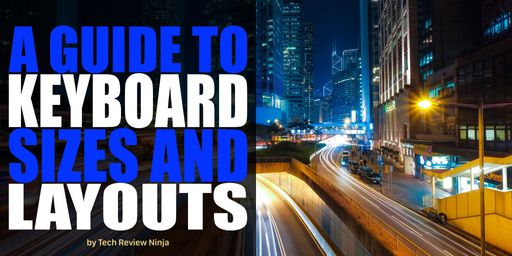
Introduction
A good quality keyboard is one of the best ways to improve your overall enjoyment and experience of typing. I also think it also improves your productivity due to improvements in typing quality and speed. Laptop keyboards are typically low profile with little feel to the keys.
Choosing a keyboard is no longer as simple as choosing between large or small and between beige or black. Keyboards come in different sizes and colours and are grouped according to their width, measured as a percentage of a standard full size keyboard. As keyboards get smaller, the size reduction reduces the number of keys; however, as you will see with even the smaller 40% keyboard, this does not necessarily mean a trade-off in functionality or practicality.
The First Keyboard Designs
During the 1970s the first-ever computer keyboards were custom made to support early mainframe computers.
In the middle of the decade, the first personal computers became available, such as the Altair shown below.
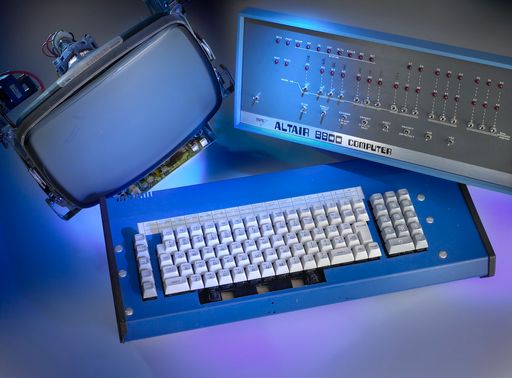
There was no included keyboard with these early computers, and instead, users had to either buy a converted IBM electric typewriter or convert another type of electric typewriter by themselves.
Early Keyboard Designs
IBM released its very first personal computer in the early 1980s and equipped it with their now-famous Model M keyboard.
IBM Model M
The IBM Model M was hugely popular due to its incredibly over-engineered construction and fantastic typing experience. You can still buy the same keyboard today from Unicomp, made from the same original mouldings and using the same type of buckling spring mechanical key switch.
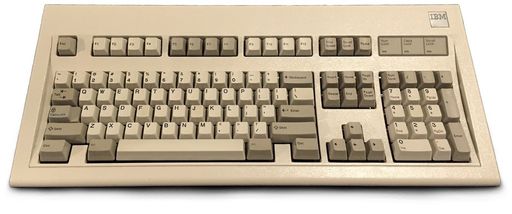
There was not much choice in colour during this period, with virtually all keyboards being either beige or grey. It wasn’t until the late 1980s that black keyboards finally became available.
Early keyboards came in only one size, the standard 104 key full size keyboard, now referred to as 100%. This size is still popular today, with only minor refinements such as the inclusion of the Windows and Menu keys on the bottom row or the inclusion of dedicated media controls.
Modern Keyboard Designs
Modern keyboards come in a wide range of different sizes, layouts, and colours; some more practical than others.
Whilst the majority of keyboards are either 104 or 87 keys (full size and tenkeyless respectively), there is an increasing range of other sizes and layouts available, many servicing niche use cases.
100% or 104 Key Keyboards
A 100% keyboard has either 104 or 105 keys and is regarded as the classic keyboard layout.

They offer a full complement of available keys. However, they are large and can easily fill up smaller desks. Many people love the inclusion of the dedicated number pad keys, whilst others never use them. For a very similar layout without the number pad, I recommend the tenkeyless keyboard layout.
96% or 99 Key Keyboards
A more condensed alternative to the 100% full size keyboard.
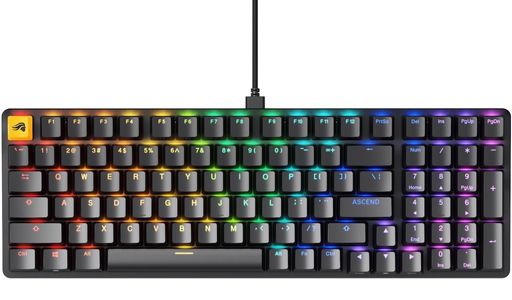
They include the majority of the keys from a 100% keyboard but in a smaller footprint. I am not a fan of the design as they can look quite busy and I prefer a more spaced out design.
75% Keyboards - aka Tenkeyless
These are becoming an increasingly popular compact keyboard layout, particularly with gamers and those looking to conserve desk space.
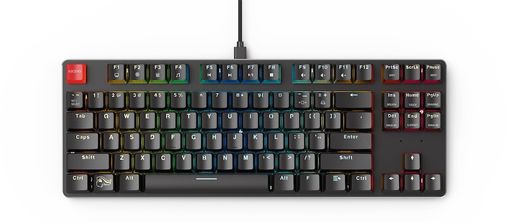
A tenkeyless keyboard removes the number pad from a full size keyboard and slightly compresses the layout for the cursor keys and the home, end and page up/down keys. This results in quite a compact design.
The layout is also found on many laptops, including the same keys but compressing them together more to fit within the limited space of a laptop.
I find a tenkeyless keyboard the sweet spot as I rarely use the number pad of a full size keyboard, where smaller keyboard layouts can become too restrictive.
65% Keyboards - aka Compact Tenkeyless
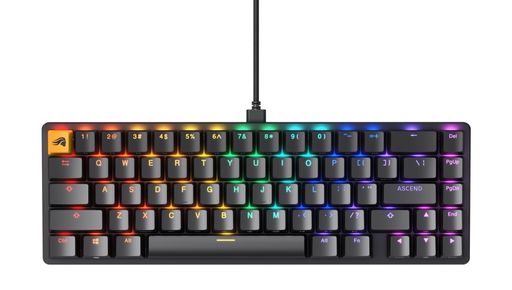
A 65% keyboard usually removes the function key row from a tenkeyless keyboard to achieve the smaller size; however, they still include the cursor keys and the page up/down keys.
60% Keyboards
These keyboards are now getting quite small.

A 60% keyboard has a very similar layout to a 65% keyboard but removes the page up/down keys and usually has smaller keys and an even more compact design.
40% Keyboards
A 40% keyboard is very small. For those coming from a full size keyboard, using a 40% keyboard can seem very strange and complicated at first.
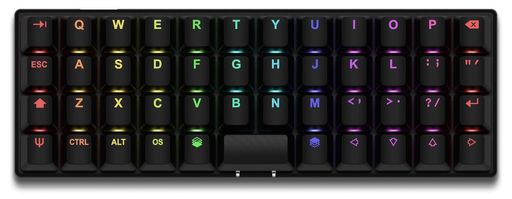
However, 40% keyboards have a cult following and offer the simplest and most minimalist keyboard layout, only including the basic alpha keys whilst remaining fully functional. They offer a highly portable keyboard that can easily can carried to work or school. Many even include a carry case.
The Planck EZ pictured above only includes 47 keys (thats less than half a full size keyboard) and measures only 234mm x 82mm x 28mm. It looks to be missing so many keys that it is hard to believe that you can use every key from a standard 104 or 87 key keyboard. To access other groups of keys (such as numbers, function keys, etc.) you need to use modifier keys to change what each key represents. This is similar to how a Shift key is used as a modifier for uppercase letters. Looking at the Planck EZ you can see two modifier keys, one each side of the space bar. These allow you to choose between the 3 individual keys that each physical key represents. This is represented in the diagram below, where the 'E' key can also be modified to produce either a '3' or a '#' depending upon which modifier key is used.
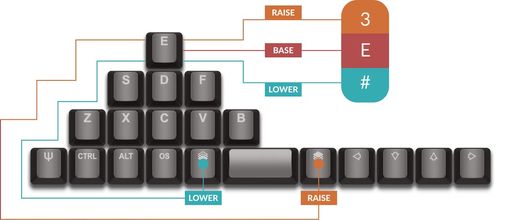
40% keyboards are also designed to be modified, or 'hacked'. The Planck EZ mechanical key switches can be changed without requiring soldering or voiding the warranty, the various key modifiers can be programmed using the supplied configuration software, and it can even emulate a mouse for a truly portable experience. I recommend checking out the Planck EZ website to see what other great features it provides.
Overall a 40% keyboard may not be for everyone; however, they are an interesting and fascinating product and can be quite fun.
Conclusion
Choosing a keyboard is no longer as simple as choosing between large and small or between beige and black. We hope this glimpse into the available sizes will help you think about what size and layout would most suit your particular use.
